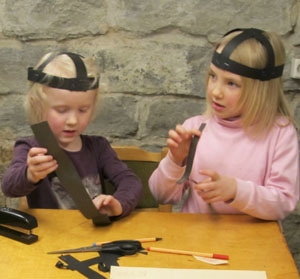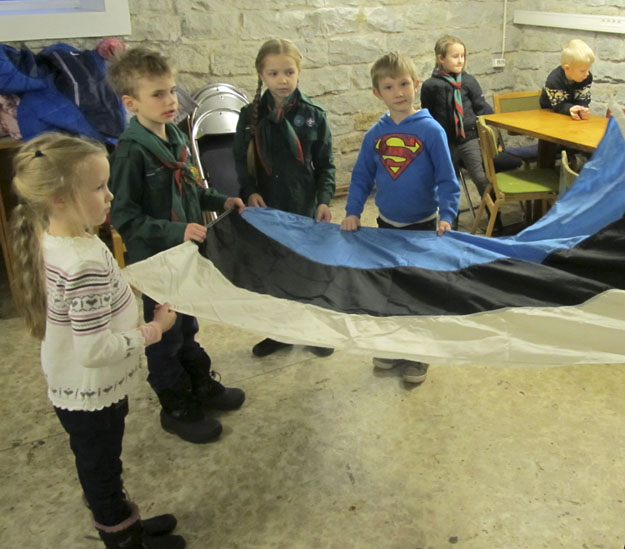
The eestlaste muistne vabadus/võitlus aka 13th century Northern Crusades era look became so popular, these two cubs-in-training or mini-hundud Suvi Mari (4)and Tuuli (5), wore them to their kindergarten class.
This sparked their teacher Aire and soon the whole class was making and wearing the historic and stylish headgear.
Forget the fascinator, this too, is fit for a ball.
Text and photos: Riina Kindlam, Tallinn
If you’re going to the kontsert and presidendi vastu/võtt (reception) to celebrate the 96th Anniversary of the Republic of Estonia on 24. veebruar, you must first travel to Pärnu, where they are being held at the Pärnu Kontserdimaja this year.
Next, you must dress the part in formal attire, which means white tie, dark suit, formal evening gown or national costume.
One cub scout troop in Tallinn prepared for the holiday by learning how to perform various rituals with the flag and making their own medieval warrior caps.
The sõja/kübar or “war hat” used to be made of strips of metal atop a thick leather cap or muru/müts (“lawn cap”), but these cubs made them out of strips of paper.
Given that scouting is now co-ed in Eesti, a few kiivrid (helmets) were spontaneously embellished with paper rukki/lilled or cornflowers, the national flower of Estonia.
 Merili, Karl August (Kusti), Ketlin and Oliver gather around the Eesti trikoloor to practice folding the flag as they would after lowering it from the flagpole at camp. (It’s always reassuring to know Superman is guarding the flag – Aitäh, Oliver.) There will be two formal flag-raising ceremonies in Estonia at sunrise on vaba/riigi aasta/päev: at the Pika Hermanni torn or Tall Hermann Tower in the capital and on Rüütli plats (Square) in Pärnu. Be sure to wear your kaela/rätt (neckerchief), tekkel (school/sorority/fraternity cap) or muru/müts.
Merili, Karl August (Kusti), Ketlin and Oliver gather around the Eesti trikoloor to practice folding the flag as they would after lowering it from the flagpole at camp. (It’s always reassuring to know Superman is guarding the flag – Aitäh, Oliver.) There will be two formal flag-raising ceremonies in Estonia at sunrise on vaba/riigi aasta/päev: at the Pika Hermanni torn or Tall Hermann Tower in the capital and on Rüütli plats (Square) in Pärnu. Be sure to wear your kaela/rätt (neckerchief), tekkel (school/sorority/fraternity cap) or muru/müts.
















